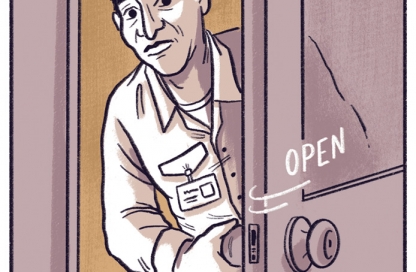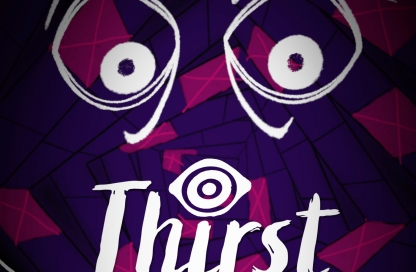Tell your story! Set up your online life with these 31 simple tips.
We make stories. That’s what we do. But we also want people to experience those stories. How do we do that? Over the next few months, we’ll be taking a look at how you visual storytellers out there can leverage social media, blogs and other tools to find your audience.
To start, we’ve gathered together some fundamental tips for you. While these tips are meant for beginners, they’re also worth a quick review for you pros in the audience (the fundamentals can slip away in the storm of change, after all).
We’ll cover Facebook, Twitter and blogging basics in this post. We chose these three because they’re staples of the online experience. They also just so happen to give you great opportunities to reach millions of people.
Consider making a Facebook Page for your work. This means you can keep your personal separate from your professional connections. Yes, you can still promote your work from your personal page once in awhile, but it’s probably not a good idea to make a daily habit out of it. Some people do well with using their personal page as their promotion hub, but make sure your friends and family are on board or they might mute you.
To create a Page:
- Go to facebook.com/pages/create
- Click to choose a Page category
- Select a more specific category from the dropdown menu and fill out the required information
- Click Get Started and follow the on-screen instructions
Consider starting a Facebook Group. If you don’t want to run a Facebook Page, then a Group will do. Unlike Pages, Facebook Groups can be private and enjoy a more one-on-one feel.
To create a Group:
- From your home page, go to the Groups section on the left side menu and click Create Group.
- Click + Create New Group at the top of the page. A window will appear, where you’ll be able to add a group name, add members and select the privacy settings for your group.
- Click Create when you’re done.
Header pics. Put up a great pic in the header with the following specs: 851 pixels wide by 315 pixels tall. Loads fastest as an sRGB JPG file less than 100 kilobytes. If it’s more than 100k it will get pixelated!
Share other posts and Like other pages. This will help people see your taste and influences.
Post every blog post on Facebook as well. You can link to the post or post it in its entirety, depending on what you want to get out of the post.
Add pictures whenever possible. Generally, people prefer images to text.
Use Facebook Insights! This is available only to Facebook fan pages, not personal profiles. The insights will tell you what’s working and what is not.
Contests are a wonderful way to get new followers. Use Giveaway Tools at http://giveawaytools.com/ and enable their Facebook tab feature, which will place the contest on your Facebook page.
Post often about what’s going on, but don’t forget to ask questions, too. Engage with your audience.
Bio. You get 140 characters for your bio. Use it well. Engage, amuse and throw in one or two hashtags to show what you’re talking about.
Username. Snag a Twitter handle that resembles your brand/story. This will make it more memorable.
Header/Profile pics. Post a large-rez image for the twitter profile page. That’s the large image at the top of the page. Also, use a great profile pic. Here are the dimensions to follow:
– Profile pic: 400 x 400 px
– Cover photo: 1500 x 500 px
Twitter will continue to drive people to use their profile pages, so take care of it.
Be nice. You can challenge people, but be respectful too. Same rules that apply to a party, apply here.
Pin your best tweet to the top of the profile page. When you do that, people who visit your page will see that tweet first, until you change it to another tweet.
Here’s how:
Go to your profile page
Find the Tweet you’d like to pin and click the ellipsis icon (•••)
Select Pin to your profile page
Click Pin
Use hashtags for your events and deals. Hashtags are the only viable way to track things on Twitter. By using a hashtag you’re calling out to millions of people that you’re ready to discuss a specific topic, so be ready to discuss!
Use Hootsuite. It’s a great app that lets you schedule tweets ahead of time. It also lets you follow “conversations” in their own tab. For example, you can follow the hashtag #infographics to see what people are saying about that subject in real time.
Use a link shortener. These are the shortened urls that you see sometimes that “hide” the long string url. Hootsuite uses its own shortener AND it gives you access to the metrics behind that short link.
Retweet often. If you explain why you’re retweeting then you’ll find buddies this way. A healthy retweet frequency is 20% of all tweets.
Always give credit for online content by mentioning “via @[Twitter Name]” if they have a Twitter name, or “via [Real Name]” if they don’t.
Follow back wisely. If the person who follows you shares your interests then follow back. Don’t follow back everyone. You’ll get useless followers that way which minimizes your ability to reach your audience.
Pump up the imagery! Twitter is getting more visual so feel free to share images. Especially if they tell a story. You are a visual storyteller after all!
Blogging
Focus. What do you bring to the table? Focus on posting about your interests, not what you think people are interested in reading. If you just focus on what other people are looking for then you’ll run out of inspiration after a week.
Plan your posts a full month to one year ahead of time. By doing so, you remove the arduous task of deciding what to write about! Use a calendar to track your content plan.
Be genuine. Your voice must be your own for it to stand out. People can spot fakery and casual-contrarians from a mile away.
Post regularly! The kiss of death is silence. Yes, the pressure is on. You can do it.
Get out of their faces. Don’t put Share buttons everywhere, just put them in one or two obvious places.
Subscribers. Use your blog as a tool to grow your fanbase by offering the option to subscribe to your blog. This way people will get an email whenever you update the site. You can put the subscribe button in an obvious place. Every blogging platform offers a version of this feature.
Be search engine friendly. Every post must have a large title (H1), a smaller sub-title (H2) underneath and preferably some bullet points within the post. This is how people browse a post AND it’s how Google scans your page.
Invite guests. Guest bloggers are waiting to post on your blog. Ask around. They’ll bring their fans with them, too.
Be a guest. Guest post yourself. Find new fans by sharing your work with new people on other blogs.
Pay attention to comments! Answer quickly and give it some thought so people know there’s a real person on the other end of the keyboard.
Pictures! Use lots of pictures, illustrations, and animations. Don’t overdo it because the file size of some images can bring the page load to a crawl. Only use imagery that you have rights to or that are labeled for reuse.
That’s it for now. Bookmark our site and come back for more tips. We’ll be doing a lot of posts about the fundamentals of online life!


